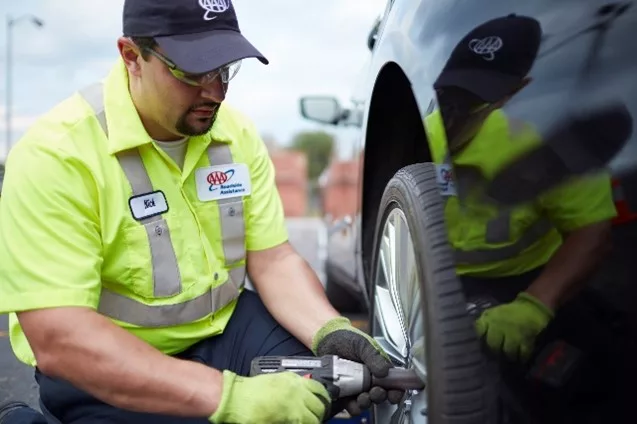Just like the recent stock market correction, it was inevitable that the soaring home sales market in Michigan’s Great Southwest would hit the pause button sooner or later, and that’s what happened in the month of January this year.
Southwestern Michigan Association of Realtors Executive Alan Jeffries says, “After two peak years, the January 2018 housing market took a step backward.” He notes, “It is not unusual for the month of January to the be least productive month of any given year. For a variety of reasons buyers and sellers push to close in December before year end. This year, for example, home sales in January were 30-percent below sales in December 2017 (190 vs. 272).”
Jeffries goes on to point out that when comparing year-over-year, January 2018 home sales fell 6-percent behind January 2017 (190 vs. 203). However, when looking at sales year-over-year in January back to 2006, the number of houses sold in January 2018 was actually the third highest, so the market is still holding up.
Jeffries suggests, “While there was no one factor that can be accountable for fewer home sales, the leading factor could be the continuing decline in the number of houses for sale.” That has been a persistent problem for months now. From December 2017, the inventory dropped from 1,365 to 1,292 in Berrien, Cass and the westerly 2/3 of Van Buren counties. In January 2018, the inventory dropped 12-percent from January 2017 (1,292 vs.1,465) giving buyers just a 4.2-months supply of houses. That level of inventory was the lowest recorded not only in January but in any month in the past 13 years.
The average selling price decreased just slightly less than 2-percent to $210,936 in January 2018 from $214,278 in January 2017.
The bright spot in the January 2018 housing market was that the median selling price was up 6-percent from January 2017 ($150,000 vs. $142,000).
The median price is the price at which 50% of the homes sold were above that price and 50% were below.
The total dollar volume fell 8-percent in January 2018 from a year ago in January 2017 ($40,077,925 vs. $43,498,631).
The number of bank-owned or foreclosed homes as a percentage of all transactions was 10.5-percent in January; just very slightly above December 2017. The previous lowest percentage in January was 11-percent in 2017. The highest percentage in January was 57-percent in 2009.
Locally, the mortgage rate increased to 4.241 from 4.075-percent in December. Last year in January, the rate was 4.329. Nationally, the Freddie Mac mortgage rate in January was 4.15 versus 3.99 in December for a 30-year conventional mortgage.
According to the National Association of Realtors, existing-home sales slumped for the second consecutive month in January and experienced their largest decline on an annual basis in over three years. All major regions saw monthly and annual sales declines last month.
Total existing-home sales, which are completed transactions that include single-family homes, townhomes, condominiums and co-ops, sank 3.2-percent in January to a seasonally adjusted annual rate of 5.38 million from a downwardly revised 5.56 million in December 2017. After last month’s decline, sales are 4.8-percent below a year ago (for the largest annual decline since August 2014 at 5.5-percent) and at their slowest pace since last September (5.37 million).
Lawrence Yun, who is Chief Economist for the National Association of Realtors, says January’s retreat in closings highlights the housing market’s glaring inventory shortage to start 2018. He says, “The utter lack of sufficient housing supply and its influence on higher home prices muted overall sales activity in much of the U.S. last month.” He adds, “While the good news is that Realtors in most areas are saying buyer traffic is even stronger than the beginning of last year, sales failed to follow course and far lagged last January’s pace. It’s very clear that too many markets right now are becoming less affordable and desperately need more new listings to calm the speedy price growth.”
The median existing-home price for all housing types in January was $240,500, up 5.8-percent from January 2017 ($227,300). January’s price increase marks the 71st straight month of year-over-year gains.
Regionally, existing-home sales in the Midwest dipped 6.0-percent to an annual rate of 1.25 million in January and are now 3.8-percent below a year ago. The median price in the Midwest was $188,000, up 8.7-percent from a year ago.
First-time buyers were 29-percent of sales in January, which is down from 32-percent in December 2017 and 33-percent a year ago. The National Association of Realtor’s 2017 Profile of Home Buyers and Sellers revealed that the annual share of first-time buyers was 34-percent.
Yun tells us, “The gradual uptick in wages over the last few months is a promising development for the housing market, but there’s risk these income gains could be offset by the recent jump in mortgage rates.” He suggests, “That is why the pace of added new and existing supply in the months ahead is worth monitoring. If inventory conditions can improve enough to cool the swift price growth in several markets, most prospective buyers should be able to absorb the higher borrowing costs.”
NAR President Elizabeth Mendenhall, a sixth-generation Realtor from Columbia, Missouri and CEO of RE/MAX Boone Realty, says Realtors in several markets are reporting that the spring buying season appears to be starting early this year. She notes, “Those planning to buy a home this spring should look into getting pre-approved for a mortgage now and start having those serious conversations with their real estate agent on what they’re looking for in a home and where they want to buy.” She adds, “With demand exceeding supply in most areas, competition will only heat up in the months ahead. Beginning the home search now could lead to a successful and less stressful buying experience.”
All-cash sales were 22-percent of transactions in January, which is up from 20-percent in December 2017 but down from 23-percent a year ago. Individual investors, who account for many cash sales, purchased 17-percent of homes in January, up from 16-percent both last month and a year ago.
Nationally, the total housing inventory at the end of January rose 4.1-percent to 1.52 million existing homes available for sale but is still 9.5-percent lower than a year ago (1.68 million) and has fallen year-over-year for 32 consecutive months. Unsold inventory is at a 3.4-month supply at the current sales pace (3.6 months a year ago).
The numbers reported for local sales include residential property in Berrien, Cass and the westerly 2/3 of Van Buren counties and should not be used to determine the market value of any individual property. If you want to know the market value of your property, you should contact your local Realtor.
The Southwestern Michigan Association of Realtors, Inc. is a professional trade association for real estate licensees who are members of the National Association of Realtors and ancillary service providers for the real estate industry in Berrien, Cass and Van Buren Counties. The Association can be contacted at 269-983-6375 or through their website at www.swmar.com.






